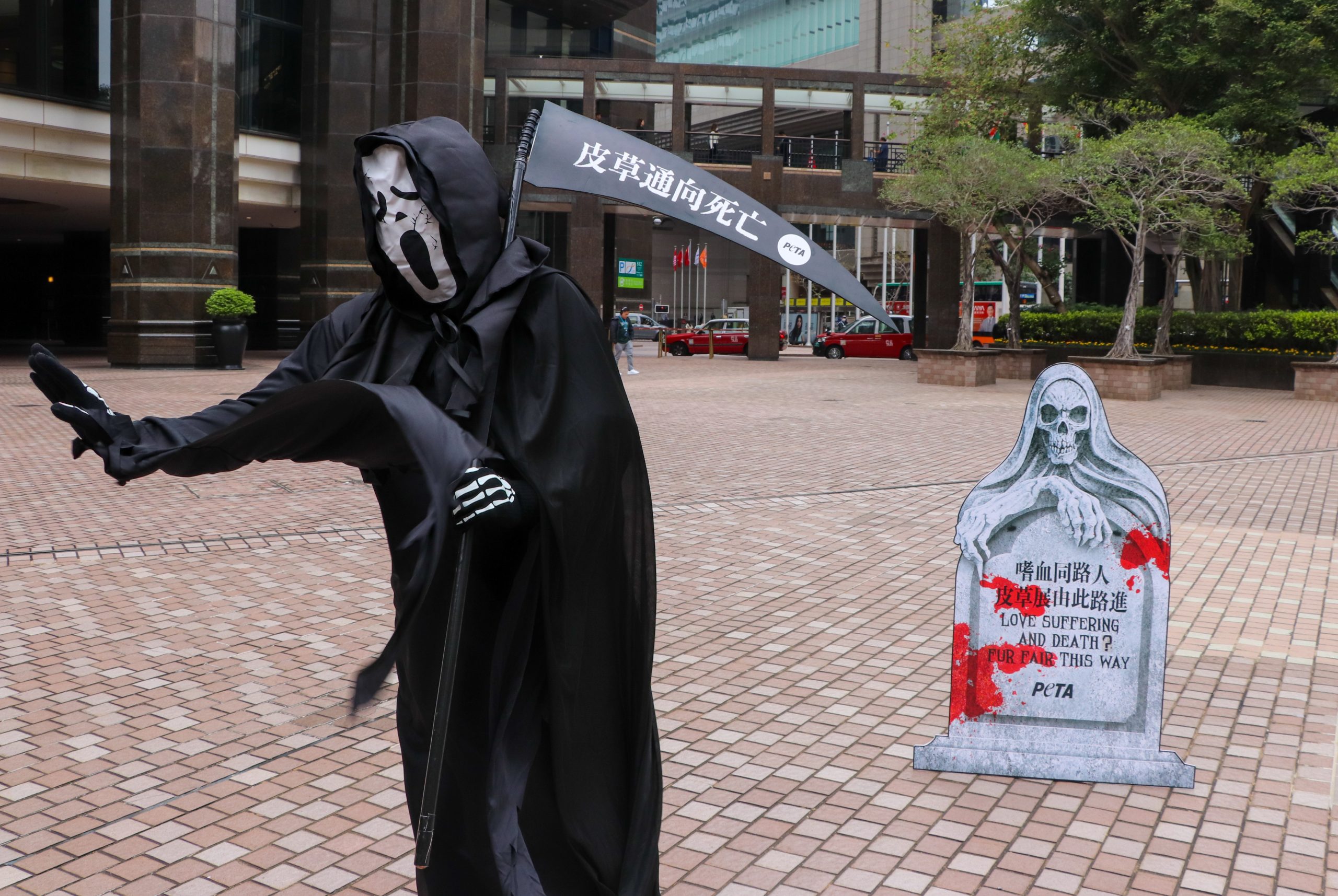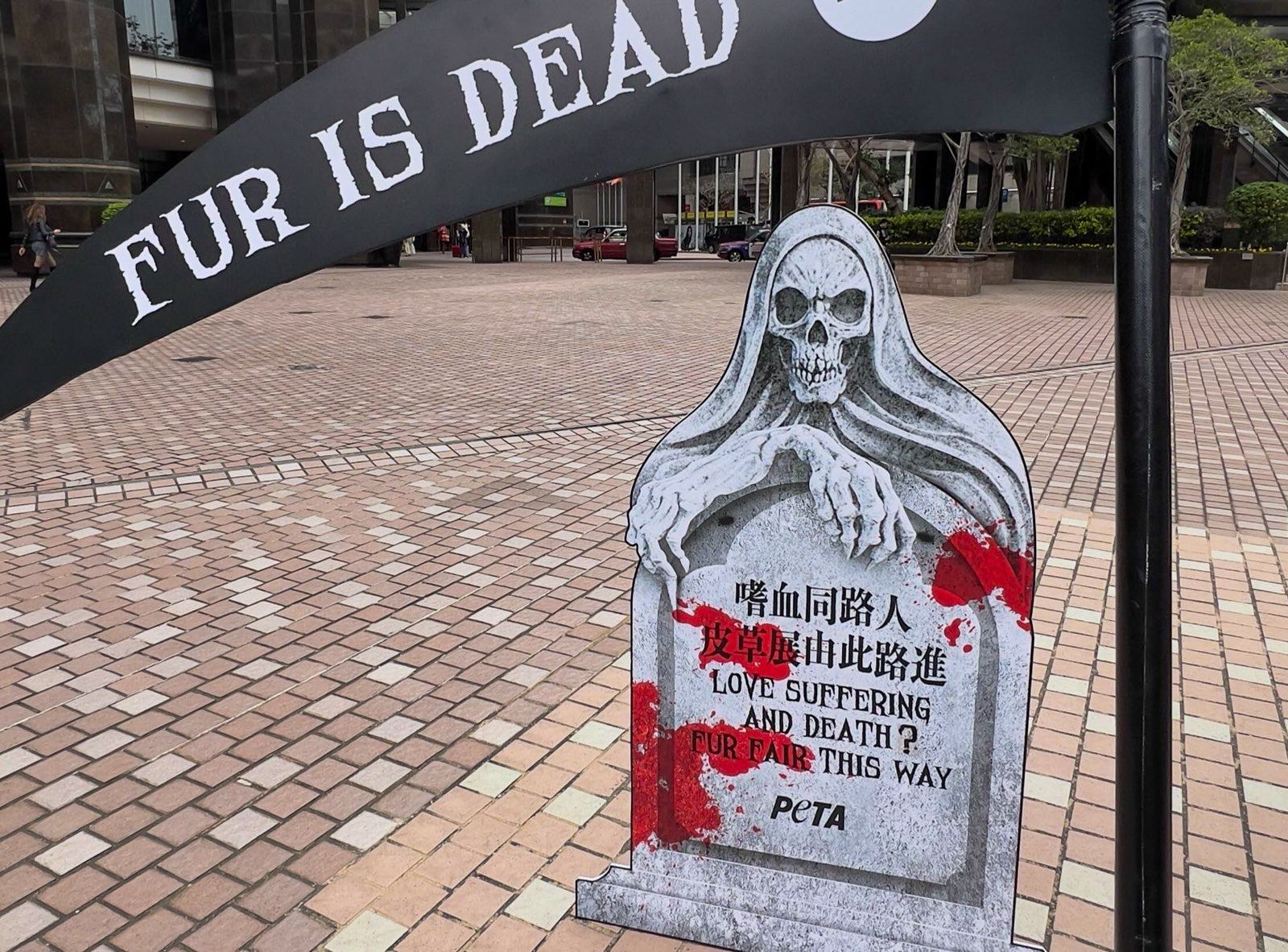
Animals rights group, People for the Ethical Treatment of Animals (PETA) Asia staged a protest outside the Hong Kong International Fur & Fashion Fair at its opening at Wan Chai on Feb 19, calling for an end to suffering.

“Love death, embrace pain,” shouted a protester dressed as the Grim Reaper. “These fur products are full of death and tears,” he said. “Embrace death with me at the fur fair.” He reminded people that fur products are made through the suffering and deaths of many animals.
Five protesters stood outside the venue for about an hour from noon.
“It is ironic that Hong Kong ranked sixth in fur exports, despite the high public awareness of the animal cruelty involved in fur goods,” Tang said.
The fur trade fair runs from Feb 19 to 22 at the Hong Kong Convention and Exhibition Centre, featuring the trading of fur and leather garments, fur skins, furrier's tools, accessories, pelts, and machinery. Among the 56 exhibitors, 12 are from mainland China, several are from Europe, the USA and North America, and the rest are from Hong Kong.
“Fur is a product behind the times. Many countries banned fur, but Hong Kong, as an international hub, continues participating in this enormous trade,” said Jackie Tang, campaigner and social media coordinator of PETA Asia.
In 2021, Hong Kong was the world's sixth-largest fur export hub. “ The fur trade fair is one of the most important exhibitions in the fur industry, with up to 70% of consumption coming from this event each year,” said Wallace Wong, director of the Hong Kong Fur Federation.
The Federation said that the fur trade is a responsible industry, highly regulated and committed to environmental conservation.

But a PETA investigation revealed that labels claiming products to be humane are not as humane as they declare to be.
“I’m here to represent compassionate people in Hong Kong opposing fur. Wearing fur is inhumane. We should not satisfy our desires by sacrificing animals’ lives,” said Louis Ng Wai-mei, public relations, and advocacy senior executive of Animal Rights Education by the Non-profit making Veterinary Services Society.
“Empathy alone is sufficient for us to oppose fur goods,” she added.
Chen Ying-nan, a 32-year-old construction consultant who passes by, is opposed to the fur trade because she is concerned about animal welfare. “ Regulating or banning the fur trade involves the interests of many corporations. It's challenging to ban the fur trade while balancing the interests of different stakeholders,” she said.
According to Fur Free Alliance, more than 25 countries have either voted to ban fur farming, have prohibited the farming of certain species, or have introduced stricter regulations that have effectively curtailed the practice.
“Fur clothing is not natural, as animal skin is an organic material that requires extensive chemical treatment to be turned into garments, leading to environmental pollution,” said Tang.
Current laws do not regulate or inspect furs from mainland China farms and re-exported from Hong Kong furriers, according to Society for the Prevention of Cruelty to Animals. Hong Kong furriers mainly manufacture fur products in mainland China and Southeast Asia.
《The Young Reporter》
The Young Reporter (TYR) started as a newspaper in 1969. Today, it is published across multiple media platforms and updated constantly to bring the latest news and analyses to its readers.

Ukrainian journalists defend local voices as war with Russia enters third year

Shenzhen restaurants win Hong Kong diners’ hearts



Comments